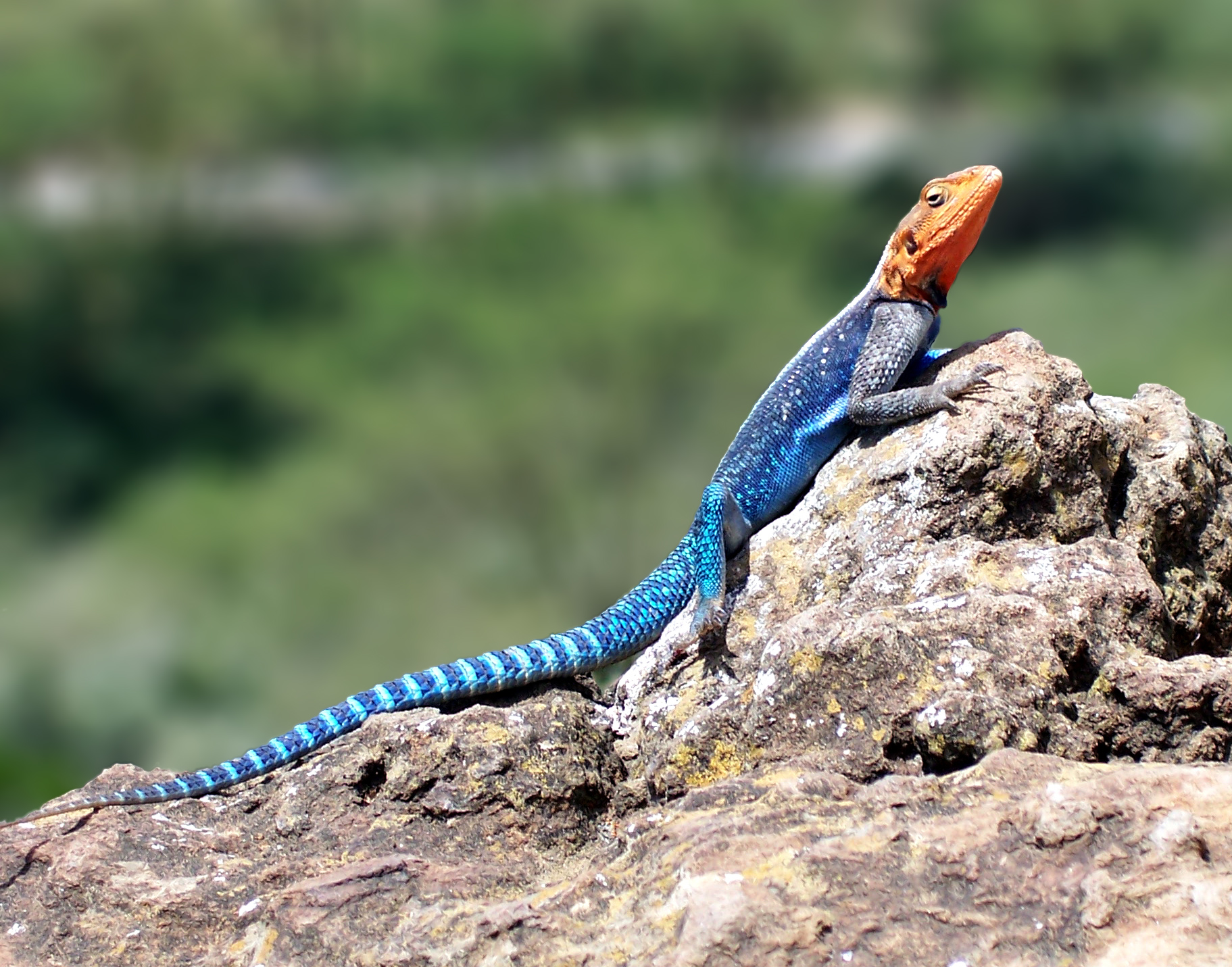- Agama (genus)
Taxobox
name = Agama

image_width = 225px
image_caption = Red-headed rock agama ("Agama agama") inKenya .
regnum =Animal ia
phylum = Chordata
classis =Sauropsid a
ordo =Squamata
subordo =Iguania
familia =Agamidae
subfamilia =Agaminae
genus = "Agama"
genus_authority = Daudin, 1802
subdivision_ranks =Species
subdivision =See text.An agama is any one of the various small, long-tailed, insect-eating lizards of the
genus "Agama". The agamid genus is composed of at least 31 species acrossAfrica , where they are the most common lizard. They can be found in many sizes, from 5 inches to a foot in length and a wide variety of colors. One of the best known species is the red-headed rock agama ("Agama agama "), widespread insub-Saharan Africa .Agamas originally lived in forest and bush across Africa, but have since adapted to live in villages and compounds where their habitat has been cleared. They live inside the thatch of huts and other small spaces, emerging only to feed. If caught out in the open, agamas are able to run quickly on their hind legs to reach shelter. The desert agama can still be found in the dry areas of North Africa, though unlike their name implies, they avoid bare sand.cite book|title=The Funk & Wagnalls Wildlife Encyclopedia|author=Burton, Maurice and Burton, Robert|date=1974|publisher=Funk and Wagnalls|volume=1|location= New York, N.Y.|oclc=20316938]
Mature dominant males have bright orange and blue coloring and may have a red face. Subordinate males, or any that have recently been frightened will have a dull brown color. At night, all males turn a dark shade of brown.
Agamas are active during the day and after often found scampering around to snatch up their favorite foods. They can tolderate greater temperatures than most reptiles, but in the afternoon when temperatures reach around 38°C (100°F) they will settle into the shade and wait for it to cool. Frequented fighting breaks out between males which involves a lot of bobbing and weaving in an attempt to scare each other. If it comes to blows, they will lash out with their tails and threaten each other with open jaws. Many older males have broken tails as a result of such fights. Females may sometimes chase and fight each others, while hatchlings mimic the adults in preparation for their future.
Agamas are mainly insectivores. Their incisor-like front teeth are designs for quick cutting and chewing of they prey. They may also eat grass, berries, seeds and even the eggs of smaller lizards.
Most agamas are polygamous. Males may hold six or more females on their territory for breeding. During courtship, the male bobs his head to impress the female. Occasionally, females may initiate courtship by offering their hindquarters to the male and then running until he is able to catch up. The breeding season is typically March-May with eggs being laid in June-September during the season after the rains. Eggs are laid in clutches of up to twelve.
pecies
The folloping species are classified within the genus "Agama":
* "Agama aculeata "
* "Agama agama " (agama lizard)
* "Agama anchietae "
* "Agama armata "
* "Agama atra "
* "Agama bocourti "
* "Agama bottegi "
* "Agama boueti "
* "Agama boulengeri "
* "Agama caudospinosa "
* "Agama cornii "
* "Agama doriae "
* "Agama etoshae "
* "Agama gracilimembris "
* "Agama hartmanni "
* "Agama hispida "
* "Agama impalearis "
* "Agama insularis "
* "Agama kirkii "
* "Agama mehelyi "
* "Agama montana "
* "Agama mossambica "
* "Agama mwanzae "
* "Agama paragama "
* "Agama persimilis "
* "Agama planiceps "
* "Agama robecchii "
* "Agama rueppelli "
* "Agama sankaranica "
* "Agama spinosa "
* "Agama weidholzi "References
* Manthey and Schuster. 1996. Agamid Lizards. T.F.H Publications Inc. U.S.A.
External links
* [http://www.exotic-pets.eu/lizards/ Information on Agamids in captivity]
Wikimedia Foundation. 2010.
